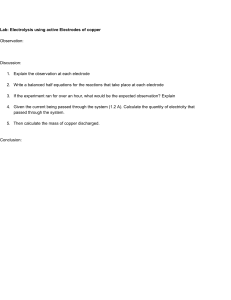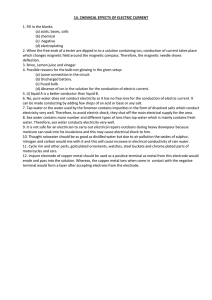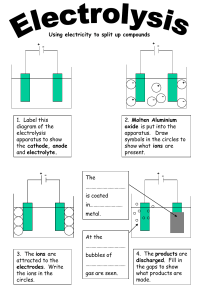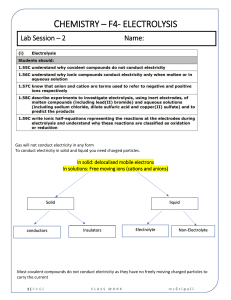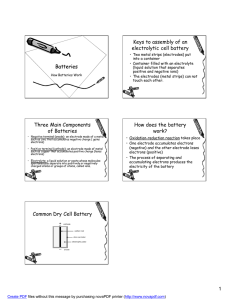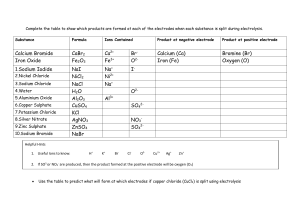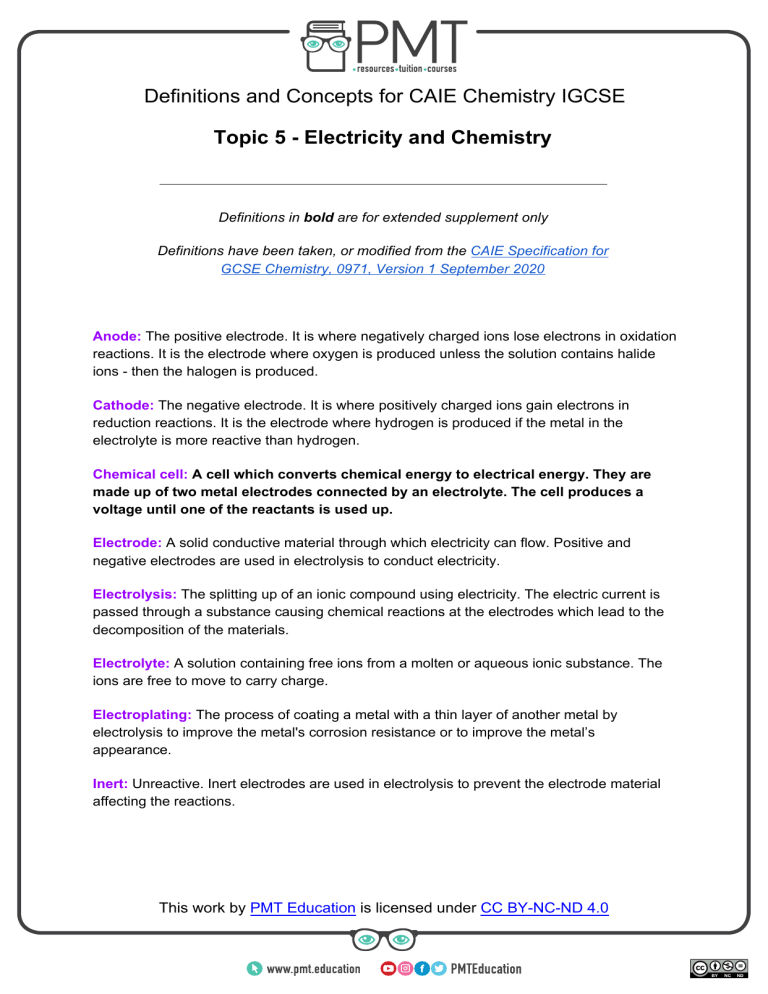
Definitions and Concepts for CAIE Chemistry IGCSE Topic 5 - Electricity and Chemistry Definitions in bold are for extended supplement only Definitions have been taken, or modified from the CAIE Specification for GCSE Chemistry, 0971, Version 1 September 2020 Anode: The positive electrode. It is where negatively charged ions lose electrons in oxidation reactions. It is the electrode where oxygen is produced unless the solution contains halide ions - then the halogen is produced. Cathode: The negative electrode. It is where positively charged ions gain electrons in reduction reactions. It is the electrode where hydrogen is produced if the metal in the electrolyte is more reactive than hydrogen. Chemical cell: A cell which converts chemical energy to electrical energy. They are made up of two metal electrodes connected by an electrolyte. The cell produces a voltage until one of the reactants is used up. Electrode: A solid conductive material through which electricity can flow. Positive and negative electrodes are used in electrolysis to conduct electricity. Electrolysis: The splitting up of an ionic compound using electricity. The electric current is passed through a substance causing chemical reactions at the electrodes which lead to the decomposition of the materials. Electrolyte: A solution containing free ions from a molten or aqueous ionic substance. The ions are free to move to carry charge. Electroplating: The process of coating a metal with a thin layer of another metal by electrolysis to improve the metal's corrosion resistance or to improve the metal’s appearance. Inert: Unreactive. Inert electrodes are used in electrolysis to prevent the electrode material affecting the reactions. https://bit.ly/pmt-edu-cc This work by PMT Education is licensed under https://bit.ly/pmt-cc CC BY-NC-ND 4.0 https://bit.ly/pmt-edu https://bit.ly/pmt-cc https://bit.ly/pmt-cc
